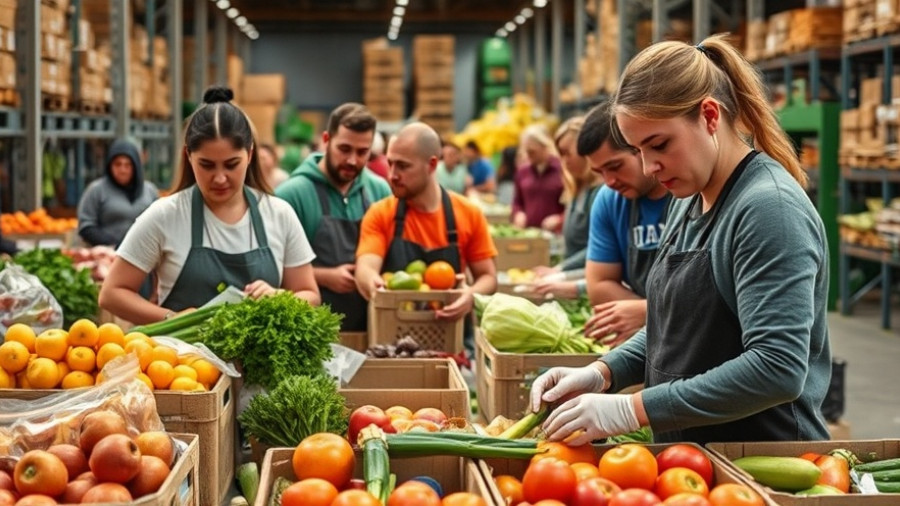
Californians Face Stark Reality as Food Aid Dwindles
As the federal government shutdown stretches into November, vulnerable Californians are bracing for a food insecurity crisis, a situation worsened by the potential loss of Supplemental Nutrition Assistance Program (SNAP) benefits. Families who rely on these vital funds are confronting a grim reality: without government action, their monthly aid will not be available. Local agencies and advocates are rallying to provide support, but the looming question remains—what happens next?
Why Food Assistance Matters Now More Than Ever
According to state officials, the stakes could not be higher: 5.5 million Californians depend on SNAP benefits, with a significant number situated in communities like Bakersfield. This financial assistance is essential not only for obtaining food but also for fostering a sense of normalcy amidst financial strain. Victims of this potential cut include children and seniors who are particularly vulnerable to hunger and health risks. If assistance stops, the dire consequences could reverberate through families and the broader community, leading to increased food bank reliance and worsening health outcomes.
Communities Mobilizing: Food Banks Step In
In response to the looming cuts, food banks across California are preparing for an unprecedented surge in demand. Organizations like the Los Angeles Regional Food Bank and local efforts like Christy's Foundation are mobilizing, enlisting volunteers and even the California National Guard to help pack and distribute meals. Michael Flood, CEO of the L.A. Regional Food Bank, described the situation as a "disaster type of scenario," urging for a governmental resolution to ensure people can access the food they need without facing long lines or hunger.
Legal Battles and Legislative Solutions
State officials are fighting back through legal channels, with California Attorney General Rob Bonta leading a coalition of states suing the federal government to secure funding for SNAP benefits. Recent rulings have indicated that the U.S. Department of Agriculture must utilize existing contingency funds to keep the program afloat. However, uncertainty looms, as a definitive timeline for the release of these funds is still unclear, raising worries for many who rely on these monthly benefits.
The Ripple Effect of SNAP Cuts
The repercussions extend beyond immediate hunger; they signify a systemic challenge. If families lose their benefits, local economies may also suffer. Research indicates that food assistance stimulates local economies, as every dollar can generate upwards of $1.70 in economic activity through food purchases. A sudden dip in available funds could thus slow economic recovery in struggling neighborhoods. Understanding the connection between SNAP and local economic health is crucial, particularly in communities already grappling with high poverty rates.
What Can Residents of Bakersfield Do?
As uncertainty surrounding SNAP benefits continues, local residents can take proactive steps to advocate for their community. Engaging with local food banks, volunteering time, and donating resources can help support those in need. Additionally, individuals can contact their representatives to voice their concerns over the potential cuts to SNAP funding—sounding the alarm on the urgency of restoring stability for vulnerable families.
The Path Forward: Support Food Aid Initiatives
In these testing times, California's residents must unite to support initiatives aimed at alleviating hunger. This fight isn't just about stopping potential SNAP cuts; it's about ensuring that every Californian has access to nutritious food. By participating in community programs, supporting legislative actions, and engaging in food bank efforts, individuals can contribute to a more equitable system where no one goes hungry.
**Call to Action:** As we navigate these uncertain times, it’s more important than ever to support local food banks. Get involved, lend a hand, and advocate for those who depend on food assistance. Every little effort counts in ensuring that everyone has access to the nourishment they need to thrive. Visit your local food bank’s website for information on how to donate or volunteer.
 Add Row
Add Row  Add
Add 



Write A Comment